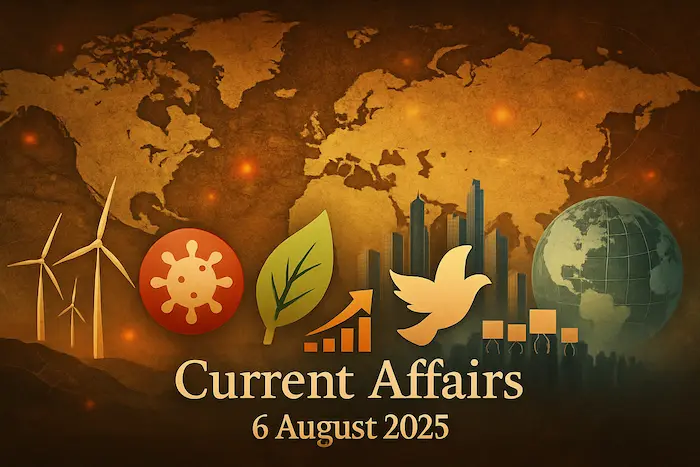1. Article 370 – Jammu & Kashmir Six Years After Abrogation – Polity

Why in News?
On August 5, 2019, Article 370 was abrogated, removing Jammu & Kashmir’s special status and reorganising it into a Union Territory (UT). The move aimed to promote national integration, development, and peace. Six years later, a review reveals mixed outcomes in political, security, economic, and tourism sectors.
Key Facts
- Article 370: Gave special status to J&K; abrogated under Article 370(3) using Presidential Order (Constitution Order 272).
- Reorganisation: State bifurcated into UT of J&K and UT of Ladakh (under J&K Reorganisation Act, 2019).
- Current Status: J&K has an elected govt (led by National Conference), but key powers remain with the Lieutenant Governor.
- Security: Terror incidents declined — 28 terrorists killed in 2025 (vs 67 in 2024). However, Pahalgam attack in 2025 caused 26 civilian deaths.
- Economy:
- Industrial investment proposals worth ₹1.63 lakh crore.
- Tax revenues up; GDP doubled from ₹1.17 lakh crore (2015-16) to ₹2.63 lakh crore (2024-25).
- Agriculture & industry lag behind.
- Tourism: Record 2.11 crore tourists (2023); contributes 7% to GDP. Security issues led to temporary closure of tourist sites.
Background & Context
- Special Status Origin: Article 370 & Article 35A allowed J&K to have its own constitution, flag, and autonomy in many matters.
- Post-Abrogation Goals: Integration with India’s constitutional framework, promotion of investment, enhanced governance, and curbing separatism.
Significance
- Positive:
- Political process partially restored.
- Reduced terror incidents.
- High investment interest and tourism growth.
- Concerns:
- Limited political autonomy despite elections.
- Fragile security environment.
- Economic growth uneven across sectors.
- Balancing security with tourism needs remains a challenge.
Exam Connect – Possible Questions
Prelims
1. Consider the following statements about Article 370:
1. It could be abrogated only with the recommendation of the Constituent Assembly of J&K.
2. Article 370 was inserted into the Constitution by the 44th Constitutional Amendment Act.
3. Presidential Orders were used to extend provisions of the Indian Constitution to J&K.
Which of the statements given above is/are correct?
A.1 and 3 only
B. 1 only
C. 2 and 3 only
D. 1, 2 and 3
Answer: A.1 and 3 only
2. With reference to the Jammu & Kashmir Reorganisation Act, 2019, consider the following:
1.J&K and Ladakh were made separate Union Territories.
2.Both UTs have a Legislative Assembly.
Which of the above is/are correct?
A.1 only
B. 2 only
C. Both 1 and 2
D. Neither 1 nor 2
Answer: A.1 only
Mains
1. “The abrogation of Article 370 has brought both integration and new governance challenges in Jammu & Kashmir.” Discuss in the context of political autonomy, security, and economic development.
2. Examine the role of tourism as a driver of economic growth in conflict-prone regions. What lessons can Himachal Pradesh draw from the post-2019 developments in Jammu & Kashmir?
2. A Crisis of Trust in Electoral Democracy – Need for a Transparent and Impartial Election Commission – Polity
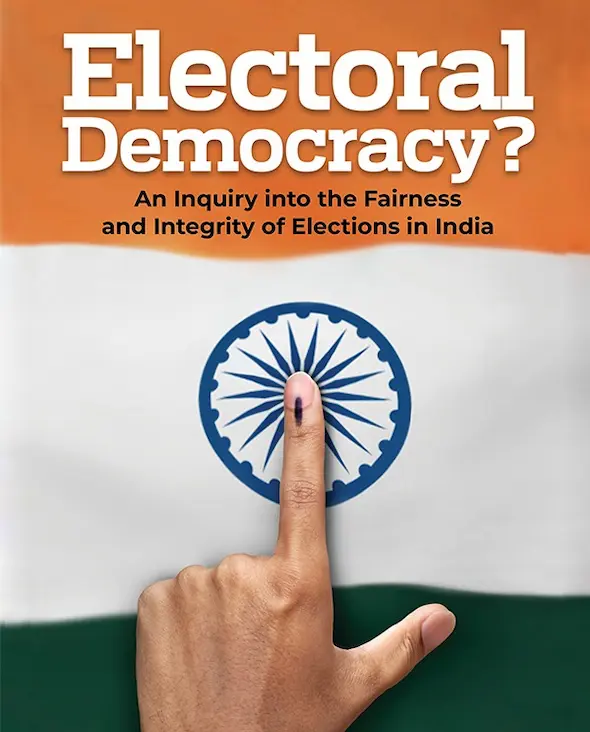
Why in News?
Post-2024 general elections, prominent leaders such as Rahul Gandhi and Tejashwi Yadav have questioned the neutrality of the Election Commission of India (ECI), citing discrepancies in voter rolls and opacity in VVPAT functioning. These developments have triggered a wider debate: Can India’s democracy thrive without public trust in its electoral process?
Key Facts
- Election Commission of India (ECI):
- Established under Article 324 of the Constitution.
- Responsible for free and fair elections to Parliament, State Legislatures, and offices of President & Vice-President.
- Comprises Chief Election Commissioner (CEC) and other Election Commissioners.
- VVPAT (Voter Verifiable Paper Audit Trail):
- Introduced to enhance transparency of EVMs.
- Produces a paper slip showing the voter’s choice for cross-verification.
- Recent Allegations:
- Discrepancies in electoral rolls (e.g., missing names).
- Opacity in VVPAT tallying — perceived as arbitrary and discretionary.
- ECI’s defensive approach — advised political parties to raise objections later, fuelling distrust.
- Reform Demands: Judicial oversight over ECI decisions; transparent & bipartisan process for appointment of Commissioners.
Background & Context
- Importance of Electoral Credibility: Legitimacy of a democratic government depends on free, fair, and trusted elections.
- Legal Powers: ECI operates under Representation of the People Acts (1950 & 1951) and related election laws.
- Global Relevance: International best practices emphasise independence of election bodies and audit transparency.
Significance
- Positive: India’s electoral process is large-scale, technologically advanced, and constitutionally protected.
- Concerns:
- Perceived bias undermines trust in institutions.
- Reduced voter confidence → potential drop in turnout.
- Weakens international perception of India’s democratic credentials.
- Way Forward:
- Mandatory VVPAT tallying in all booths.
- Independent & bipartisan appointment process for ECI members.
- Judicial/Parliamentary oversight of ECI actions to ensure transparency.
Exam Connect – Possible Questions
Prelims
1. Which of the following provisions relate to the Election Commission of India?
1.Article 324 of the Constitution deals with the powers of the ECI.
2. The Chief Election Commissioner can be removed only in the manner and on the grounds prescribed for removal of a Supreme Court judge.
3.The term of the Chief Election Commissioner is six years or until the age of 65 years, whichever is earlier.
Select the correct answer:
A.1 and 2 only
B. 1 and 3 only
C. 2 and 3 only
D. 1, 2 and 3
Answer:D. 1, 2 and 3
2. With reference to VVPAT in Indian elections, consider the following statements:
1.It is used to cross-verify votes recorded in Electronic Voting Machines.
2.The voter can take the printed VVPAT slip home as proof of voting.
Which of the statements given above is/are correct?
A. 1 only
B. 2 only
C. Both 1 and 2
D. Neither 1 nor 2
Answer: A. 1 only
Mains
1. The Election Commission of India is the constitutional guardian of free and fair elections. In light of recent controversies, critically examine the need for reforms in its structure and functioning.
2. Public trust in democratic institutions is the cornerstone of electoral legitimacy. Analyse the factors responsible for erosion of such trust and suggest institutional safeguards.
3. Pollution Control Boards Empowered to Levy Environmental Damages – Supreme Court Ruling – Environment
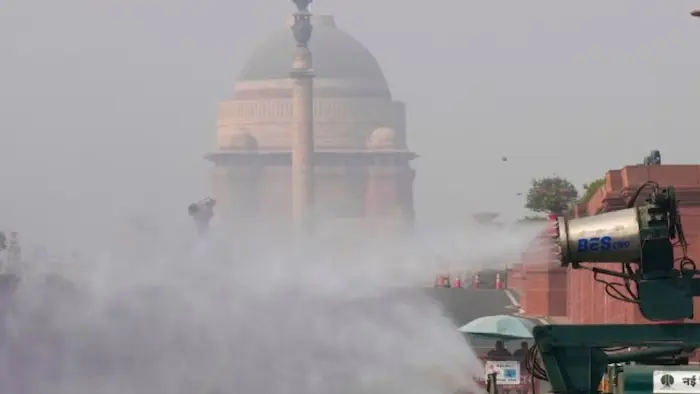
Why in News?
In a landmark judgment, the Supreme Court of India has clarified that Pollution Control Boards (PCBs)—both Central and State—have the authority to impose and collect restitutionary and compensatory damages under the Water Act, 1974 and the Air Act, 1981. This strengthens enforcement of environmental laws and ensures polluters bear the financial cost of environmental harm.
Key Facts
- Authority Granted:
- Restitutionary damages: For restoring the environment to its original state.
- Compensatory damages: To compensate affected communities or the state for losses caused by pollution.
- Additional Power: PCBs can demand bank guarantees from industries to ensure future compliance and cover potential environmental damage.
- Legal Provisions:
- Section 33A, Water Act (1974): Power to issue directions for closure, regulation, or prohibition of industries violating water pollution norms.
- Section 31A, Air Act (1981): Similar powers for air pollution control.
- CPCB (Central Pollution Control Board):
- Established: September 1974 under the Water Act.
- Operates under: Environment (Protection) Act, 1986.
- Functions: Advises Centre, coordinates with SPCBs, sets national pollution standards, monitors quality, resolves disputes.
- SPCBs (State Pollution Control Boards):
- Established by states under the Water Act.
- Functions: Monitor local pollution, enforce laws, conduct awareness drives, penalise violators.
Background & Context
- Polluter Pays Principle: Central to environmental law in India; requires polluters to bear remediation costs.
- Earlier Limitations: PCBs often relied on court orders for penalty collection, slowing enforcement.
- Impact of Ruling: Empowers PCBs to take immediate financial action, improving deterrence against violations.
Significance
- Positive Outcomes:
- Stronger deterrence against environmental violations.
- Faster redressal of environmental damage.
- Reduced dependence on lengthy litigation.
- Challenges:
- Risk of misuse or arbitrary penalties without transparent guidelines.
- Need for better technical capacity in PCBs to assess damages accurately.
- Way Forward:
- Standard methodology for calculating damages.
- Third-party audits to ensure accountability.
- Public disclosure of penalties and compliance status.
Exam Connect – Possible Questions
Prelims
1. Which of the following provisions empower Pollution Control Boards to take direct action against violators?
1. Section 33A of the Water Act, 1974
2. Section 31A of the Air Act, 1981
3. Section 19 of the Environment (Protection) Act, 1986
Select the correct answer:
A. 1 and 2 only
B. 1 and 3 only
C. 2 and 3 only
D. 1, 2 and 3
Answer: A. 1 and 2 only
2. Consider the following statements about the Central Pollution Control Board (CPCB):
1. It was established under the Environment (Protection) Act, 1986.
2. It sets National Ambient Air Quality Standards.
3. It monitors pollution in Union Territories.
Which of the above is/are correct?
A. 1 and 2 only
B. 2 and 3 only
C. 1 and 3 only
D. 2 and 3 only
Answer: D. 2 and 3 only
Mains
1. Discuss the significance of the Supreme Court’s recent ruling empowering Pollution Control Boards to impose environmental damages. How can this strengthen environmental governance in India?
2. “The Polluter Pays Principle is necessary but not sufficient for sustainable environmental protection.” Examine in the context of India’s legal and institutional framework.
4. Supreme Court Empowers Pollution Control Boards to Impose Environmental Compensation – Polity
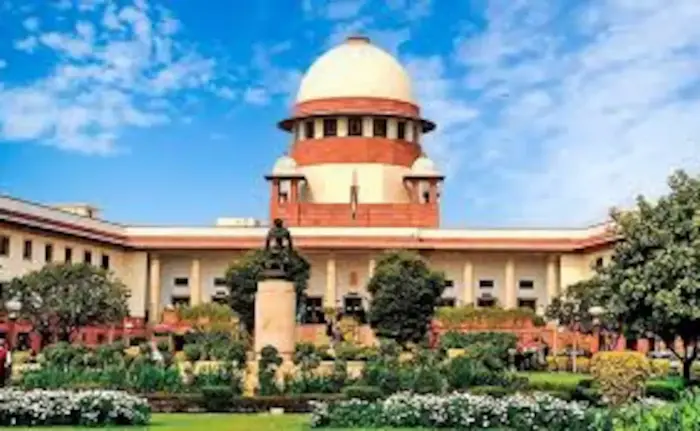
Why in News?
The Supreme Court has ruled that Pollution Control Boards (PCBs) have the authority to impose environmental compensation on polluting entities under the Water Act, 1974 and Air Act, 1981. This overturns a previous Delhi High Court ruling that limited penalty imposition to the judiciary, enabling PCBs to take proactive measures against environmental harm.
Key Facts
- Statutory Basis:
- Section 33A, Water Act (1974): Power to direct closure, prohibition, or regulation of water-polluting industries.
- Section 31A, Air Act (1981): Similar powers for air pollution control.
- Supreme Court Ruling:
- PCBs can levy restitutionary damages (for restoring environment) and compensatory damages (to compensate loss caused).
- Compensation allowed only if actual or imminent environmental damage exists.
- PCBs may demand bank guarantees to ensure compliance.
- Natural Justice: Subordinate legislation must ensure fair hearing before penalties are imposed.
- Judicial Precedent Referenced:
- Vellore Citizens Welfare Forum v. Union of India (1996): Established the Polluter Pays Principle and environmental restitution as a constitutional duty under Articles 21, 48A, and 51A(g).
Background & Context
- Case Origin:
- Delhi Pollution Control Committee (DPCC) challenged a 2012 Delhi HC order that had annulled its compensation notices against properties operating without environmental consents.
- Earlier Limitation: Courts were seen as the only authority to impose penalties, slowing enforcement.
- Impact of Ruling: Empowers PCBs to act quickly, strengthening preventive and remedial environmental governance.
Significance
- Positive Implications:
- Strengthens Polluter Pays Principle enforcement.
- Enables faster response to environmental violations.
- Aligns environmental regulation with constitutional duties and SDG goals.
- Concerns:
- Risk of arbitrary or excessive penalties without clear calculation norms.
- Need for transparency and independent oversight.
- Way Forward:
- Standard guidelines for damage assessment.
- Public access to penalty orders for accountability.
- Capacity-building for PCBs in technical assessment.
Exam Connect – Possible Questions
Prelims
1. With reference to the Supreme Court’s ruling on Pollution Control Boards (PCBs), consider the following statements:
1. PCBs can impose compensation even in cases of potential environmental damage.
2. This power is derived from Sections 33A of the Water Act and 31A of the Air Act.
3. The ruling overruled the 1996 Vellore Citizens Welfare Forum case.
Which of the statements given above is/are correct?
A. 1 and 2 only
B. 2 and 3 only
C. 1 and 3 only
D. 1, 2 and 3
Answer: A. 1 and 2 only
2. The Polluter Pays Principle, upheld in Indian environmental jurisprudence, is most directly linked to which of the following constitutional provisions?
1.Article 21
2.Article 48A
3.Article 51A(g)
Select the correct answer:
A. 1 and 2 only
B. 2 and 3 only
C.1, 2 and 3
D.1 only
Answer: C.1, 2 and 3
Mains
1. The Supreme Court’s recent decision to empower Pollution Control Boards to impose environmental compensation marks a shift in environmental governance. Analyse its implications for India’s federal structure and constitutional environmental obligations.
2. Discuss the significance of integrating the Polluter Pays Principle into statutory enforcement mechanisms. How does it balance environmental protection with industrial development?
5. Ethanol Blending – Cleaner Fuel with Mileage and Maintenance Trade-offs – Economy
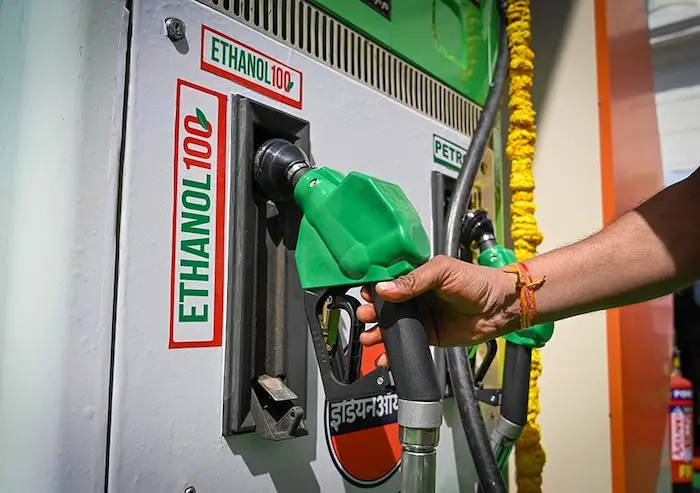
Why in News?
India has rolled out E20 fuel (20% ethanol + 80% petrol) nationwide — five years ahead of its original 2030 target. While this step supports energy security and reduces carbon emissions, concerns have emerged about lower fuel efficiency and vehicle maintenance issues due to ethanol’s properties.
Key Facts
- Ethanol: Alcohol-based biofuel produced from sugarcane, maize, and biomass; renewable and cleaner-burning than petrol.
- Ethanol Blended Petrol (EBP) Programme:
- Launched: 2003.
- Achieved E10 (10% blend) in 2022.
- E20 rollout completed in 2025.
- Environmental Benefits:
- Lower CO₂ emissions.
- Supports Polluter Pays Principle in spirit by reducing fossil fuel use.
- Economic Gains:
- Expected annual crude oil import bill reduction: ₹50,000+ crore.
- Increased demand for sugarcane → better income for farmers.
- Mileage Impact:
- Ethanol has ~30% lower energy content than petrol.
- Mileage loss estimates:
- 1–2% for E10-optimized vehicles.
- 3–6% for others (govt figures).
- 6–7% possible in real-world for non-optimized vehicles (independent studies).
- Corrosion Risk:
- Ethanol absorbs water (hygroscopic) → corrosion of metals, damage to rubber/plastic components in older vehicles.
- Automakers producing E20-compatible models to address this.
Background & Context
- Policy Motivation:
- Reduce crude oil dependency (India imports ~85% of crude needs).
- Promote cleaner fuels to meet climate commitments (Paris Agreement, SDGs).
- Provide market stability for sugarcane farmers.
- Global Perspective:
- Brazil and USA have long-standing ethanol blending policies (E25, E85 fuels).
Significance
- Positives:
- Reduces greenhouse gas emissions.
- Strengthens farmer incomes.
- Cuts import dependence, saving foreign exchange.
- Concerns:
- Lower mileage → higher fuel consumption.
- Maintenance costs for older vehicles.
- Need for public awareness and infrastructure readiness.
- Way Forward:
- R&D for higher fuel efficiency with ethanol blends.
- Gradual rollout of higher blends (E30, E40) with retrofitting support.
- Consumer education campaigns on E20 compatibility.
Exam Connect – Possible Questions
Prelims
1. With reference to the Ethanol Blended Petrol (EBP) Programme, consider the following statements:
1. It was launched in 2003 to promote the use of biofuels.
2. Ethanol has a higher energy content than petrol.
3. The E20 rollout in India was achieved ahead of the original target.
Which of the statements given above is/are correct?
A.1 and 3 only
B. 1 only
C. 2 and 3 only
D. 1, 2 and 3
Answer: A.1 and 3 only
2. The E20 fuel blend in India contains:
A. 20% petrol and 80% ethanol
B. 80% petrol and 20% ethanol
C. 50% petrol and 50% ethanol
D. 10% petrol and 90% ethanol
Answer: B. 80% petrol and 20% ethanol
Mains
1. Ethanol blending in petrol is seen as a win-win for the environment, economy, and agriculture. Critically analyse in the context of India’s E20 rollout.
2. Discuss the trade-offs involved in transitioning to ethanol-based fuels in India, with reference to vehicle performance, infrastructure readiness, and farmer welfare.
6. Reintroduction of the Asian Giant Tortoise in Nagaland – Environment
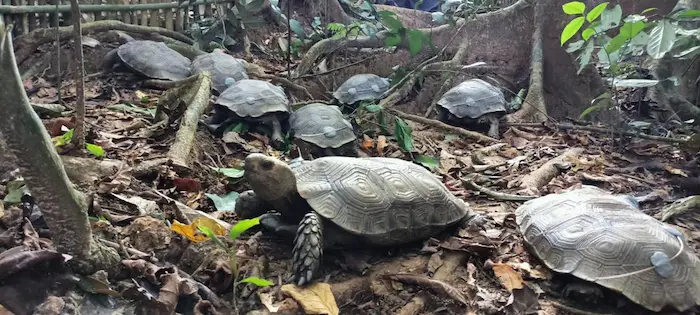
Why in News?
The Asian Giant Tortoise (Manouria emys phayrei), the largest tortoise species in mainland Asia and a critically endangered species, has been successfully reintroduced into the Zeliang Community Reserve, Peren district, Nagaland. The initiative aims to restore population numbers and protect this ancient species.
Key Facts
- Scientific Name: Manouria emys phayrei.
- Size Status: Largest tortoise species in mainland Asia.
- Unique Behaviour: One of the oldest tortoise lineages; exhibits crocodilian-like behaviour — guarding eggs and regulating incubation temperature.
- Appearance:
- Hatchlings → greyish-brown.
- Adults → charcoal black.
- Habitat: Tropical & subtropical hill forests.
- Distribution: Bangladesh, India (Northeast), Indonesia, Malaysia.
- Diet: Bamboo shoots, tubers, soft vegetation; occasionally invertebrates and frogs.
- Threats:
- Hunting for meat.
- Habitat destruction.
- Human activities — construction, slash-and-burn (jhum cultivation).
- Conservation Status:
- IUCN: Critically Endangered.
- CITES: Appendix II.
Background & Context
- Ecological Role: Helps maintain forest ecology through seed dispersal.
- Decline Factors: Combination of over-exploitation and habitat loss.
- Nagaland’s Conservation Effort: Community-based reserves like Zeliang involve local participation, integrating wildlife conservation with livelihoods.
Significance
- Positive Outcomes:
- Strengthens conservation of a rare species.
- Encourages community-led biodiversity management.
- Supports India’s commitments under Convention on Biological Diversity (CBD).
- Challenges:
- Long-term survival depends on habitat security.
- Requires anti-poaching vigilance and awareness campaigns.
- Way Forward:
- Eco-tourism models linked to conservation.
- Continuous monitoring & research on survival rates post-release.
Exam Connect – Possible Questions
Prelims
1. With reference to the Asian Giant Tortoise, consider the following statements:
1. It is found only in India and Bangladesh.
2. It exhibits egg-guarding behaviour similar to some reptiles like crocodiles.
3. It is listed as Critically Endangered by the IUCN.
Which of the statements given above is/are correct?
A. 1 and 2 only
B. 2 and 3 only
C. 1 and 3 only
D. 1, 2 and 3
Answer: B. 2 and 3 only
2. In which of the following locations was the Asian Giant Tortoise recently reintroduced?
A. Dampa Tiger Reserve, Mizoram
B. Zeliang Community Reserve, Nagaland
C. Nameri National Park, Assam
D. Keibul Lamjao National Park, Manipu
Answer: B. Zeliang Community Reserve, Nagaland
Mains
1. Community participation is often critical for species reintroduction programmes. Discuss in the context of the reintroduction of the Asian Giant Tortoise in Nagaland.
2. “Conservation of critically endangered species is as much a socio-economic challenge as it is an ecological one.” Analyse with examples from India’s North-East.

